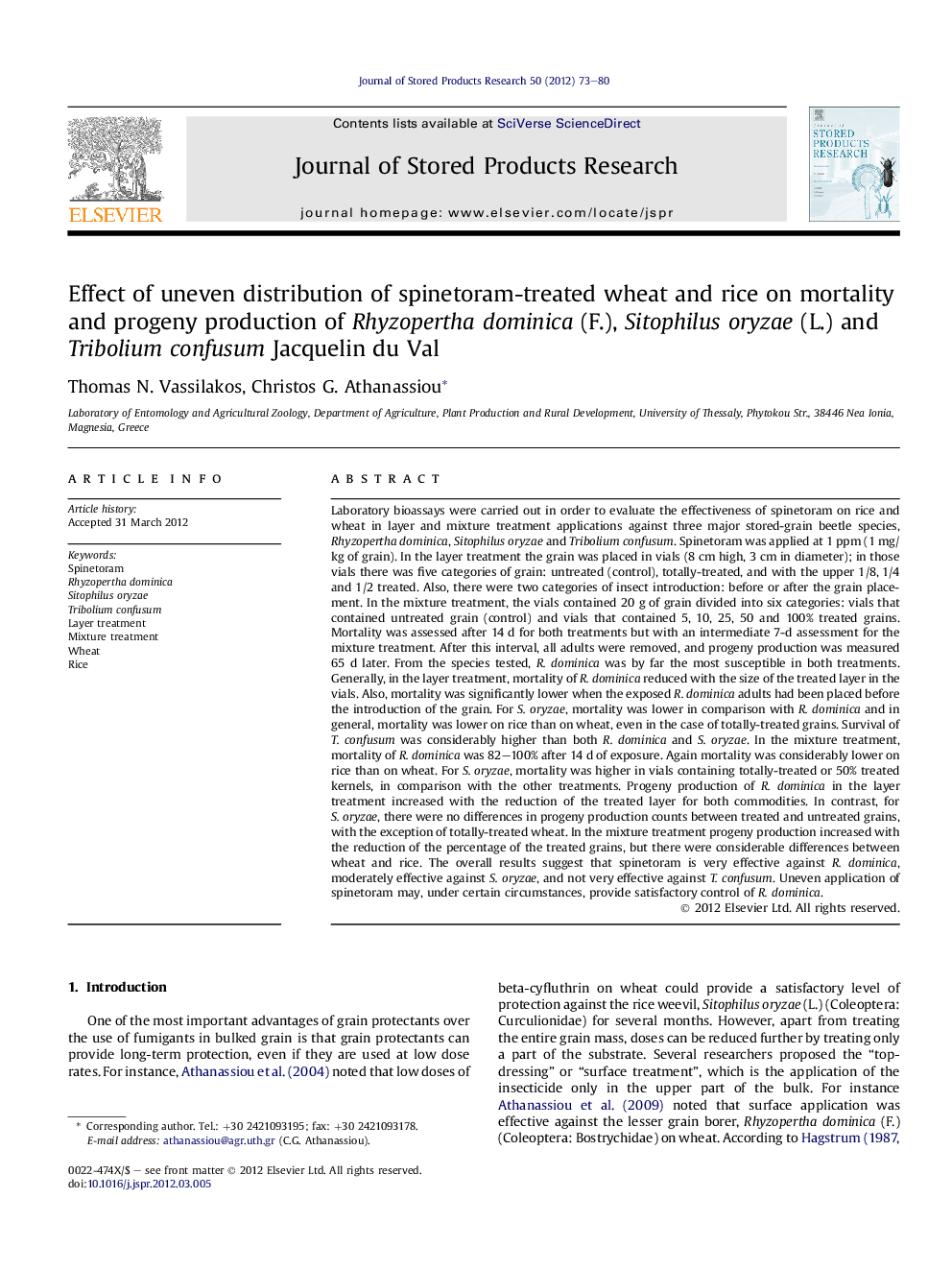| Article ID | Journal | Published Year | Pages | File Type |
|---|---|---|---|---|
| 4517185 | Journal of Stored Products Research | 2012 | 8 Pages |
Laboratory bioassays were carried out in order to evaluate the effectiveness of spinetoram on rice and wheat in layer and mixture treatment applications against three major stored-grain beetle species, Rhyzopertha dominica, Sitophilus oryzae and Tribolium confusum. Spinetoram was applied at 1 ppm (1 mg/kg of grain). In the layer treatment the grain was placed in vials (8 cm high, 3 cm in diameter); in those vials there was five categories of grain: untreated (control), totally-treated, and with the upper 1/8, 1/4 and 1/2 treated. Also, there were two categories of insect introduction: before or after the grain placement. In the mixture treatment, the vials contained 20 g of grain divided into six categories: vials that contained untreated grain (control) and vials that contained 5, 10, 25, 50 and 100% treated grains. Mortality was assessed after 14 d for both treatments but with an intermediate 7-d assessment for the mixture treatment. After this interval, all adults were removed, and progeny production was measured 65 d later. From the species tested, R. dominica was by far the most susceptible in both treatments. Generally, in the layer treatment, mortality of R. dominica reduced with the size of the treated layer in the vials. Also, mortality was significantly lower when the exposed R. dominica adults had been placed before the introduction of the grain. For S. oryzae, mortality was lower in comparison with R. dominica and in general, mortality was lower on rice than on wheat, even in the case of totally-treated grains. Survival of T. confusum was considerably higher than both R. dominica and S. oryzae. In the mixture treatment, mortality of R. dominica was 82–100% after 14 d of exposure. Again mortality was considerably lower on rice than on wheat. For S. oryzae, mortality was higher in vials containing totally-treated or 50% treated kernels, in comparison with the other treatments. Progeny production of R. dominica in the layer treatment increased with the reduction of the treated layer for both commodities. In contrast, for S. oryzae, there were no differences in progeny production counts between treated and untreated grains, with the exception of totally-treated wheat. In the mixture treatment progeny production increased with the reduction of the percentage of the treated grains, but there were considerable differences between wheat and rice. The overall results suggest that spinetoram is very effective against R. dominica, moderately effective against S. oryzae, and not very effective against T. confusum. Uneven application of spinetoram may, under certain circumstances, provide satisfactory control of R. dominica.
► Spinetoram was very effective against adults of Rhyzopertha dominica on wheat and rice. ► The application of spinetoram in some parts of the grain mass reduces its effectiveness. ► Spinetoram was moderately effective against Sitophilus oryzae adults, but ineffective against Tribolium confusum adults.
